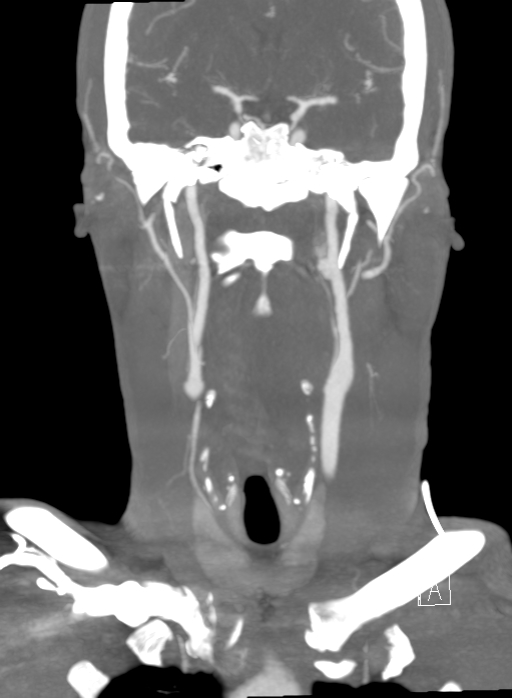Back to 2016 Annual Meeting Program
Eagle Syndrome Presenting After Blunt Trauma: A Case Series
Ashley Mann, Chalmers Wood, Scott Hardouin, Robert Carter, Karl Stark, Scott Kujath, Mark Friedell
University of Missouri-Kansas City, Kansas City, MO
Background: Eagle syndrome is an unusual phenomenon unfamiliar to most vascular surgeons. Patients develop neurologic or vascular manifestations arising from an elongated styloid process and/or an ossified stylohyoid ligament; these symptoms are secondary to irritation or compression of the neurovascular bundle within the carotid sheath. Presentations can vary from cervical pain and a globus sensation to carotid dissection, transient ischemic attacks and stroke. Here we present a case series of the carotid subtype identified after blunt trauma.
Methods: Chart and literature review.
Results: A 29 year old female sustained multiple severe injuries during a motor vehicle collision, including an internal carotid artery dissection secondary to a fractured styloid process; she suffered an ischemic stroke during her hospitalization. After completing extensive rehabilitation, a subsequent CT angiogram revealed a persistent internal carotid stenosis at the site of her dissection flap. She underwent carotid artery stenting with full resolution of her stenosis. A 73 year old female was activated as a trauma after a standing-height fall due to a syncopal episode and sustained an orbital floor fracture. A maxillofacial CT revealed a prominent styloid process and bilateral ossification of her stylohyoid ligaments. Her syncopal workup was negative, and during her interview she reported she had been previously diagnosed with vertigo and had pain and lightheadedness on turning her head to the side; subsequent orthopantogram confirmed an elongated styloid process and ossification of her stylohyoid ligaments. A 38 year old male was evaluated in the ED after an assault for a scalp laceration and developed acute neck pain and dysphagia just prior to discharge; a CTA of the neck revealed an internal carotid artery pseudoaneurysm with an elongated styloid process abutting the artery. He underwent emergent endovascular covered stent placement with complete exclusion of the aneurysm and significant improvement in his symptoms.
Conclusion: Trauma patients may constitute a unique subset of Eagle syndrome patients and knowledge of its etiology and variants may be helpful to the clinician during their workup. 

Back to 2016 Annual Meeting Program
